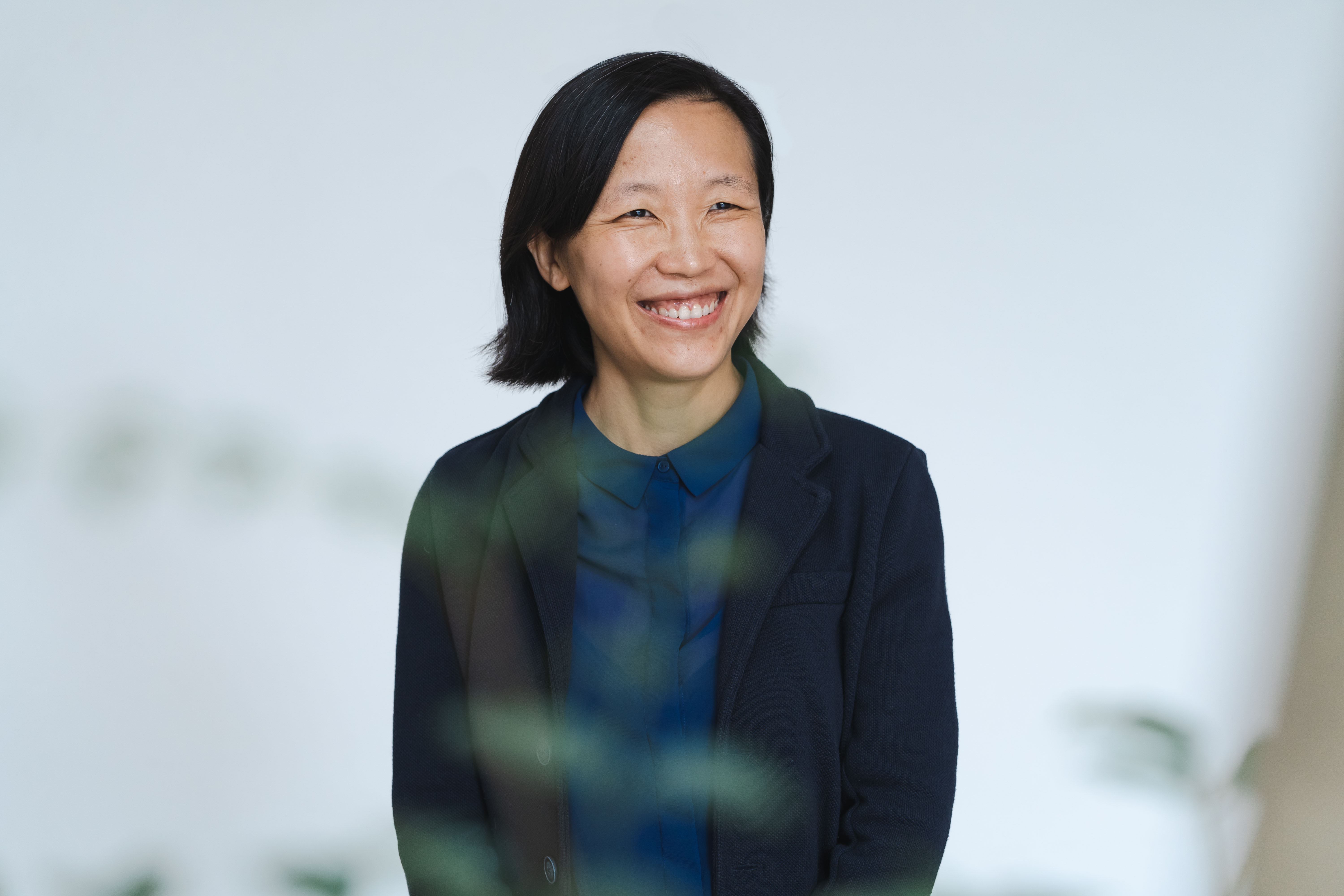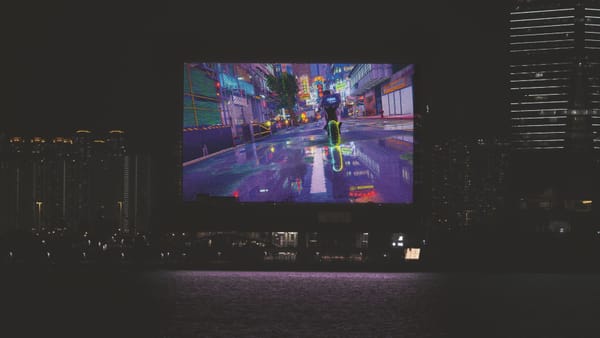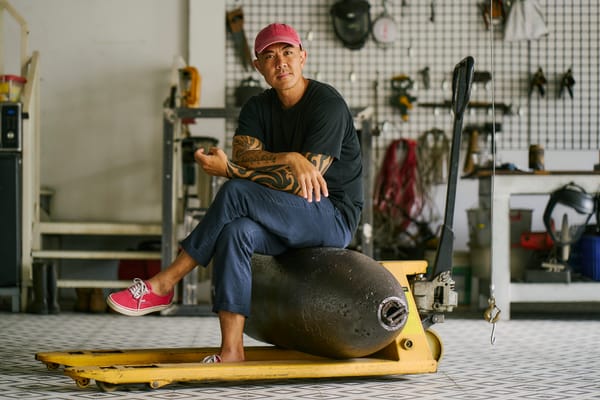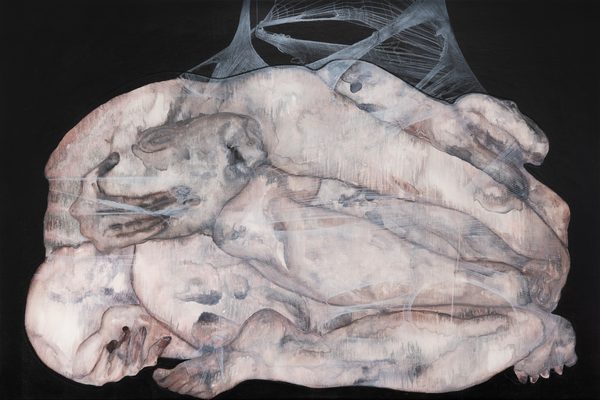People
Curator Conversations: Carol Yinghua Lu


This conversation is part of a series between Caroline Ha Thuc and curators across Asia Pacific. Carol Yinghua Lu is a curator, art critic, and director of the Beijing Inside-Out Art Museum, where she recently curated the first major survey of Wang Youshen, “Codes of Culture” (2022), and the Yokohama Triennale (2024) with co-curator Liu Ding. She was a contributing editor at Frieze magazine (2008–2018) and a visiting fellow at Tate Research Centre (2013).
You graduated from the critical studies program at Malmö Art Academy in Sweden and later did your PhD at the University of Melbourne. I suppose that, by that time, there were no curatorial studies available in China. How did you make your way towards curating?
Before I embarked on my study in Sweden, I had only worked in the contemporary art field for two years, so I sought relevant education. I was not particularly interested in curatorial courses, though, worrying it would be too narrow.
As it turned out, the critical studies program in Malmö was very well conceived. The participating fellows included artists, art historians, curators, and institutional practitioners from different cultural backgrounds, who all had a certain amount of experience. Throughout most discussions, everyone contributed from their unique positions. Therefore, my views about art and the artworld were not confined to a curator’s perspective, but were broadened by others. Having artists in the group was the most helpful—after all, artists are often at the heart of creative practices and know the secrets of the creative process. We also studied many Western theories, a real challenge for me then. Looking back, I was struck by the limitations of Western thought, not by their universality. But they did open my eyes to a way of thinking that is extremely reflexive and critical.
I never cared whether I became a curator or not. I am keen to explore the creative practice through different forms: writing, organizing exhibitions, making publications, or directing institutions. Likewise, one doesn’t necessarily need to study curation in academics. The practice is very hands-on; like making art, curation is something you learn by doing, not just by reading literature.
How would you define your role as a curator, then?
The role of a curator is not so important to me. In 2010, Liu Ding and I co-curated the exhibition “Little Movements: Self-practice in Contemporary Art.” In this exhibition, we proposed to approach all art practitioners as equal to one another by considering the creativity and intensity of each practice. The hat of a curator means nothing if one does not propose something meaningful or fails to articulate it through compelling visual and conceptual narratives. My hope is that my education and understanding in art history aid and enable my curatorial work.
You are also an art historian, and your recent exhibitions at Beijing’s Inside-Out Art Museum are very much centered around art history, with the idea of learning from the past in order to understand the present. Is education a priority to you as a curator?
Self-education is one of my priorities as a curator. I also stress to my colleagues at Inside-Out that one of their prime responsibilities is continuous education. I don’t think an institution can grow without the intellectual growth of its staff members. For professional development, I have built an internal library for the entire museum staff, which collects historical journals, reference books, and the most up-to-date publications in literature and humanities.
The program at Inside-Out consists of over 30 talks, conversations, and seminars by artists, curators, art historians, and scholars annually, all of which are free to the public. In that sense, we see ourselves as an educator in contemporary art and curatorial practices.

In the exhibition “Notes: Chinese Artistic and Intellectual Voices from the End of the Twentieth Century” (2022) that you co-curated with Liu Ding, you express very strongly the necessity to learn from the past. In 2012, for the 7th Shenzhen Sculpture Biennale, your work Accidental Message, Art is Not a System, Not a World (2012) explored Chinese practices and theory from the 1990s. At that time, you felt there was a lack of discussion about these early contemporary practices. Ten years later, do you feel that the situation has changed?
Not necessarily. People interested in historical practices and discourse are always a minority. For me and Liu Ding, the need to learn from the past is real and urgent. Through research, we have discovered many gaps between universalized perceptions of certain historical periods and actual historical fact. We found that existing interpretations of contemporary art and its historical origins are limiting and unable to account for the role of artistic catalysts of certain artworks, the transitions of an artist’s career from one point to another, and, above all, the historical course and present state of contemporary art.
Ultimately, we are eager to understand the relationship between contemporary art, its discourse, and the ideological structure in China. We aspire to build a critical narrative of contemporary Chinese art that considers its intricate relationship with sociopolitical contexts and its inherent connections to the former decades, which have been overlooked or misrepresented. Starting in 2013, our research proposes placing contemporary art practice in the historical context of modernization in China from 1949. We have been translating our findings into a series of exhibitions and publications, including the group exhibition “Notes.”
In this exhibition, you juxtaposed texts from different disciplines, combining extracts from art practitioners with papers written by intellectuals in order to multiply the voices that reflected the last decades of the 20th century. Did you leave the interpretation open to the public?
“Notes” was conceived for a small gallery space, which we temporarily occupied during Gallery Weekend Beijing. There were a selection of images, including 43 conceptual works and 18 notebooks, with each notebook containing an essay that we excerpted and translated into texts-on-posters, presented on the walls. It was not a narrative meant to be interpreted freely—actually, I don’t think such a thing really exists. All the artworks, essays, and quotes were carefully selected to posit our understanding of what art practice could be.
What we intended to demonstrate is the affinity between the artistic and the intellectual practices of the time, a very neglected topic. After 1987, with the ideological tightening of the social space and artists being absorbed into social systems, there were discussions about “purifying art,” meaning to prioritize the technical, formal, stylistic, and sensory aspects of artistic practice over its intellectual engagement with the world. That was further aggravated by the pragmatic and economically driven spirit of the 1990s. Artistic practices became engulfed in the so-called art industry and distanced from social and intellectual realities. Art making was over-simplified into an intuitive, physical, and perceptual form of practice. However, some conceptual artists critically interrogated and confronted themselves with social realities and translated their reflections into artworks. These works have been less appreciated in the market-oriented discourse since the 1990s. We chose to highlight these works and their connections with the intellectual discussions of the time, as opposed to simply examining artistic styles or formal languages.

Recently, Claire Bishop criticized research-based art practices and exhibitions based on an abundance of materials, archives, and discourses. How did you help activate these research-based elements in your exhibition?
Research-based art practices and exhibitions have become a rigid art form in their current development. However, it does not mean research-based art has all lost its relevance. It is still relevant if one wishes to address the issues stemming from the necessity of such approaches in the work.
In “Notes,” each element was carefully selected and brought together to form a composition; a certain intensity in its narrative and expression and was also accessible. It was not about compiling information and facts. We have done the research, digested and internalized our discovery, and hopefully articulated it succinctly and livelily. We have had some of the strongest responses from the audience regarding how the exhibition was set up. Many young audience members returned several times and immersed themselves in the readings. There was a strong appeal in visually centering texts in an exhibition.
Especially in the context of Gallery Weekend Beijing, where most exhibitions were commercial, this serious exhibition was a welcome exception. We showed artistic practice not as a product for the market’s consumption, but as a process, an intellectual and artistic adventure with the potential to pose questions and challenge norms. Through our contextualization of artistic practices around the turn of the millennium, young audiences could understand why these works were made at that moment and their links to the sociopolitical conditions of that time.
How do we avoid a top-down mode of knowledge production?
The work that Liu Ding and I do to revisit historical realities, such as “Notes,” was our attempt to resolve some of the questions we have encountered. It is never about teaching anyone, but confronting ourselves with our issues by sorting out precedents in history.
Through these exhibitions, we hope to establish a localized understanding of contemporary art and its discursive practice, in close relation to its internal politics and social genealogy. It will help loosen the interpretive framework of contemporary art, as superficially informed by Western modern and contemporary art genealogies, and suspend the constant comparison and evaluation of Chinese contemporary art against those of Western origins. Without fully understanding the ideological structure that has informed the historical formation of contemporary art and how it operates, it is impossible to grasp our current position in Chinese history. By acknowledging the continuous logic of the Chinese Communist Party’s regime, we recognize the urgency of making that logic transparent, as it concerns every art practitioner working in China in the present.
How disruptive can your curatorial discourse be?
I hope my curation can contribute to a more nuanced understanding of art practices and history in China. We continuously make the interior logic at work transparent in how art has been made, described, evaluated, circulated, consumed, and historicized so that one can develop a self-critical view towards unconscious acts and approaches.
We are merely presenting nuances and complexity to challenge the structural orientation of mainstream narratives and experiences. We hope to discover hidden cracks in existing narratives that can serve as new starting points for reflection.
In all of our projects, we prioritize the relevance and agency of individuals in “systems and structures.” We propose considering systems as human beings, full of weaknesses and cracks. We should never stop dismantling and destroying them from within.

For the eighth Yokohama Triennale in 2024, you have chosen to refer to Lu Xun’s poetry collection Wild Grass (1927). Why did you choose this framework?
“Wild Grass” was conceived at the end of 2021, when the world gradually emerged from Covid-19, restarting and reconnecting. We were confronted with devastation, desperation, and a profound sense of crisis brought by the pandemic, climate change, the widespread turn towards conservative nationalism and authoritarianism, the Russian war on Ukraine, and the rise of conspiracy theories in popular consciousness. We were determined to search for an exhibition theme that speaks of humble humanism, courage, resilience, faith, and solidarity.
The title was taken from Lu Xun’s anthology Wild Grass, penned from 1924 to 1926, during a turbulent period in Chinese history. The 23 essays portrayed the personal and social realities he was confronted with. For him, the greatest sense of crisis and defeat came from the 1911 Xinhai Revolution that overthrew the Qing government, which represented the old order. Yet, the new order did not bring fundamental changes to society. He soon embraced despair as the starting point for his life, work, and thoughts, accepting that there would be no more hope or ambition, only darkness. At the same time, he devoted himself to finding an outlet in this complete darkness. In 21st-century China, Lu Xun represents an individual in solitude who constantly rebelled against existing situations, yet remained attentive to the movements of the world, contemplating the fate of individuals and humanity within them. This made him a role model for us.
The rapid, global spread of Covid-19 led us to reflect on the irreconcilable contradictions of globalization. The pandemic is not a single public health crisis, it exposes, triggers, or accelerates other existing crises and provokes new ones. The mix of political hegemony, escalating ideological competition and clashes of civilizations, exerts an ongoing, corrosive and destructive effect on the well-being of the contemporary world. “Wild Grass” thus signifies a philosophy that elevates the irrepressible force of individual life to a respectable existence that transcends all systems, rules, regulations, and forms of control and power. It is a model for flexible expression of subjectivity. As such, we propose a modest imagination, where we are all outsiders living in the cracks, stealthily dismantling the systems that are killing us.
Is your curatorial theme also a way to connect the history of Japan and China, therefore, to locate Chinese art within a wider framework?
In our curatorial vision, we wish to revisit a selection of historical moments, events, figures, and trends of ideas since the beginning of the 20th century. Some examples include the resonance of Japanese and Chinese left-wing woodcut movements in the early 1930s, the rise of a subjective imaginary in the postwar cultural construction in East Asia, the reflection on modernity after the global radical movements of the late 1960s, and the critical and emancipatory energy of postmodernism in full swing in the 1980s. On this basis, we draw inspiration from the anarchist practices and thoughts that emerged since the proposal of “the end of history,” to explore options for possible dialogues between individuals, institutions, and authorities. In this Triennale, we prioritize the relationship between art and its intellectual incentives and champion the engagement of art with reality. Through historical instances and contemporary examples, presented as artworks in this exhibition, we highlight the agency and subjectivity of individuals and their potential to overcome national and ideological constructs. As such, we hope to generate a new imaginary of global friendship among individuals, as opposed to among countries, and call for the promising union of the spirit of individual internationalism.

More generally, how would you locate Chinese contemporary art within the global art network and discourses?
In 2021, Liu Ding and I co-curated “Waves and Echoes: Postmodernism and the Global 1980s,” presenting experimental practices from the ‘80s by artists around the world. It was an extension of the exhibition “Waves and Echoes: A Process of Re-contemporization in Chinese Art Circa 1987 Revisited.” Through the former, we provided a global context for a series of “anti-art,” “anti-cultural,” or Dadaist artworks and projects, which took place in different Chinese cities between 1986 and 1987, as well as the simultaneous influences of postmodernist thought across the world. This exemplified how we situate Chinese contemporary art within the global art network and discourse, as it has unique and parallel developments. The sense of contemporaneity is not about being a replica or component of a universal model, but about contributing specificity to a complex global network. That is, it moves at the same pace, but not on the same track.
Do you think it could be important to establish stronger connections with the Asian region?
Yes. It is equally important to theorize specific experiences and historical processes in Asia so that these experiences and specificities are not just of local relevance, but can also become accessible to understand global experiences and processes. We have consciously and unconsciously relied heavily on a conceptual framework developed from Western experiences. The dominance of such a framework, which itself has limitations, has blinded us to the relevance of Asian countries and led to the negligence of experiences among Asian practitioners. Regional constructs such as the Global South and Indo-Pacific area can enable an active inquiry into regional experiences, but they are only one of the many perspectives and conceptual aids one can take.
You are working as a team with Liu Ding, who is also an artist. In fact, you have not only been curating exhibitions together but have also written essays together. How does this collaboration work?
Liu Ding and I have worked together for slightly over two decades now. It has been a long process involving countless trips, conversations, and collaborations. We are both quite independent, confident, candid, and generous in our spirits, which helps make our collaboration enriching for both of us. We can listen to and learn from each other. We are also quite different in our strengths. Liu Ding is visionary, daring, imaginative, and thoughtful. I am impulsive, practical, sociable, and flexible. In this sense, we assist and support each other.







